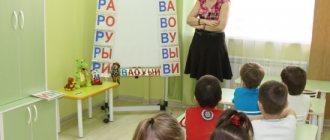Motherhood
June 24, 2020
text: Anna Volkova
Experts say that the best age to learn multiple languages is infancy. From the moment of birth, children are ready to learn the languages of their environment without any confusion or delay. Let’s figure out whether it’s true or a myth that bilingual children have advantages over their peers, but first let’s talk about an important problem that parents raising bilinguals should understand from the very beginning.
Problems of raising bilingual children
Even in cases where parents are well aware of their children's language abilities, they should not feel falsely reassured. Adults may think that it is enough to speak to each other in different languages so that children hear speech and learn to understand it. Psychologists say that mastering a language requires enormous contact. It's about talking to young children as much as possible, reading aloud and singing to them.
To avoid problems in bilingual education of a child, it is necessary to provide massive language exposure. Moreover, it must be personal; it cannot be delegated to a TV or tablet. According to pediatricians, screen time does not help children's language learning, even with monolingual upbringing, and even more so when raising bilinguals. With the help of a screen, children can receive information and improve their vocabulary, but speaking abilities develop only through personal communication. Parents must understand this and get involved in the learning process as much as possible.
Trilingualism. And this is possible
The most difficult situations are bilingual families in a country with a third language. But this also happens in our open world. It turns out that at the age of early socialization, a child who is already bilingual must also learn a language to communicate with society. Psychologists recommend postponing this introduction until the age of six, so as not to overload the child. In the future, a difficult period awaits him, which will be easier the more similar the third language is to one of the parent languages: that is, it is easier for a child whose parents are Russian and French to learn German than Chinese. In any case, the situation is complex and requires the support of specialists, although many children cope with this problem.
In multilingual families, the question always arises: will the child be fluent in languages? After all, what is language? It's not just vocabulary. This is the ability to use his expressive means in order to express, among other things, shades of feelings, joke, etc. Mastery of a language is not possible without detailed knowledge of the culture to which it belongs. For example, claim that you know English if you have never been to Great Britain and do not know many small details of everyday life, do not know proverbs, catchphrases, quotes from films, have no idea about children's books, etc. - wrong. It turns out that a child will only be truly fluent in the language of the culture in which he is located. It is possible to combine two cultural backgrounds, although this is an extremely difficult task.
Anna Nikitina
1/ Intelligence level
Myth or truth: The IQ of bilingual children is lower than that of those who speak only one
Myth . “This opinion really existed in the scientific community until about the middle of the 20th century,” explains linguist Elena Simonova. “It was based on a study conducted at the beginning of the century of several hundred families where bilingual children grew up. It turned out that their intellectual development was more modest than that of their peers who spoke only one language. But the researchers did not take into account a very important social factor in their work. In those days, bilingual children most often grew up in migrant families, that is, people of low income and limited opportunities. The fact that children did not demonstrate amazing success in learning and development could be due to hereditary factors, low living standards, the inability to give children a good education, and poor nutrition, in the end. Modern scientific data completely cancels the results of those that were published a century ago. It is reliably known that bilingual people are characterized by greater brain plasticity, more easily acquire new knowledge in any area and are less likely to suffer from cognitive impairment in old age.”
Scientists from Canada, a country where English and French are officially named official languages and where almost 100% of children are bilingual, have found that the brain function of people who learn several languages from infancy is different. They found that they had better developed memory, speech centers and the ability to be flexible in solving creative problems. Surprisingly, bilinguals use just as many words as monolingual children when telling stories. This indicates a high level of cognitive flexibility.
Types of bilingualism
In the scientific understanding there are:
- congenital (also early) bilingualism - when a child learns both basic and foreign languages from birth (parents have different native languages or move to another country in early childhood)
- acquired (also late) bilingualism - when a person (adult or teenager) begins to master a second foreign language after communication skills in their native language have been formed.
In this case, even if you start learning a second language early enough, it is still positioned as a foreign language. This classification rather refers to the age at which a person begins to fully use two.
According to the mechanism of development, natural and artificial bilingualism are distinguished.
- Natural bilingualism is formed due to the real need to communicate simultaneously in 2 languages - the need to communicate with foreign relatives, for the purpose of study, work, or because of moving.
This concept is somewhat broader than the concept of congenital bilingualism and generally has a different character.
- Artificial bilingualism - the term speaks for itself - is a situation in which a person learns a language that he does not use in everyday life.
2/ When do bilingual children start speaking?
Myth or truth: bilingual children begin to speak later than their peers
Is it true . A child growing up in a multilingual family is often in no hurry to say his first words. However, this has nothing to do with intellectual development. It just takes time for the brain to organize the information it receives before using it.
“My husband and I speak English, he and his parents communicate with our daughter Emma in German, and my family and I chat with her in Russian,” says Natalya. — When the girl was a year and a half old, at the family council they began to sound the alarm: the child does not speak! To clear my conscience, I went to a child psychologist, heard a soothing “Mom, don’t worry” - and literally a week later the child surprised us. Emma was playing with her grandfather, and he jokingly told her in German to tell her mom that it was time for dinner. The child fulfilled the request exactly, and automatically translated the phrase into Russian - especially for me.”
In order for the development of several languages to proceed harmoniously, parents of bilingual children will have to ensure that speaking is supported by reading and the ability to write in these languages.
3/ Start of communication
Myth or truth: you need to communicate with your child in a foreign language as early as possible
Is it true . Studying the neural reactions of 11-month-old children, scientists found that already at this age there is an obvious difference in the brain activity of babies growing up in mono- and bilingual families. Even before children begin to speak, those raised in bilingual environments show greater brain activity in areas involved in problem solving, redirecting attention, and other important functions.
The sooner a child finds himself in a multilingual communication environment, the higher the chance that he will speak the languages he hears like a native speaker - clearly, without an accent, thinking in this language. “Many parents are now trying to hire an English-speaking nanny, for example, if everyone in the family speaks the same language,” says pediatric neuropsychologist Pavel Doronin. “This is a very convenient way of learning: the baby does not need to explain grammatical structures or ask him to memorize words. His brain itself will analyze the speech situation and draw conclusions. But if parents decide to start teaching a foreign language when their son or daughter turns three, the approach will be different: memorization, explanation of the rules. There is only one plus in later language learning: a child or teenager, with diligence and desire, is able to master it quite quickly. But he most likely will not speak like a native speaker.”
Setting Family Rules
- As soon as the baby begins to speak, it is necessary to clearly distinguish between languages. Correct him if during a conversation he begins to mix up foreign words. By the age of 3-4, the brain has mastered most grammatical structures and there should no longer be problems with confusion. Therefore, already from kindergarten, the baby can comfortably maintain communication.
- Follow the rule “each parent uses only his own language.” This will simplify the task and also minimize confusion between linguistic constructs. Your goal is to form the habit of hearing speech forms from different speakers.
- Set a rule - you use one language in public places, and another, for example, at home. It can also be differentiated based on time. One in the morning and afternoon, another in the evening.
- It is very important to give older children foreign books to read so that they can more easily grasp grammatical structures. At the same time, remember the need to alternate texts.
4/ One language - one contact
Myth or Truth: Children Should Speak to Each Parent in the Established Language
Myth . The theory of adopting a "one parent, one language" approach to bilingual families was popular 100 years ago. Experts advised creating such associativity out of fear that otherwise children might experience intellectual fatigue or confusion. Today it has been established that such an approach is neither necessary nor sufficient for the successful acquisition of two languages. Parents can follow any strategy that promotes qualitative and quantitative language learning. For example, with reference to a person (one person - one language), place (one language at home - one outside the home), time (hours or days of the week). At the same time, experts note that a flexible approach without fixed rules is not a mistake. This experience leads to a balanced and positive interaction with the child.
Classes with bilingual children
To involve children in active communication in a foreign language, you can use the game method. Here are some examples of activities with bilingual children that will help expand their vocabulary and encourage them to speak.
- Game "Puppy" . Children love animals and love to reward toys with their voices. Buy or make your own toy puppy. The point of the game is that the toy speaks only one of the languages. Change with the child so that one of you can be the “puppy” in turn.
- Puzzle game . Puzzles are good for any age. Ideally, this could be a puzzle that will allow the child to expand his vocabulary. During the game, you discuss with him the shapes, colors and placement of puzzle elements, decide what is suitable and what is not. The game allows you to use comparison words, progress, and evaluation of results. Allow yourself and your child to think out loud as you complete the puzzle.
- Game “Mom brought it” . This is a very simple game that resembles a city game. One of you says: “Mom went to the store and brought ...”, after which he offers the first letter of the object. The second player’s task is to name as many words as possible starting with this letter in the desired language.
And finally, something interesting: scientists from the UK found that bilingual children are better than their peers at recognizing the emotions of adults. It’s harder to hide rudeness and lies from them!








